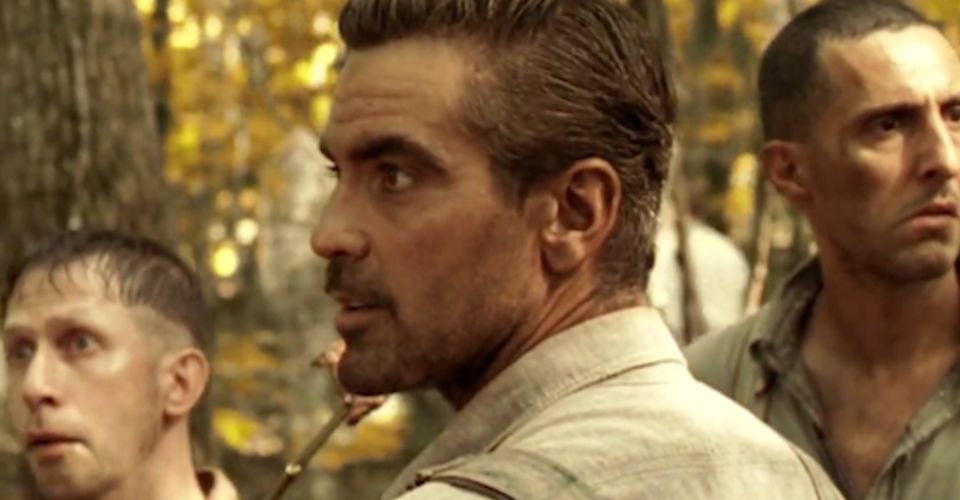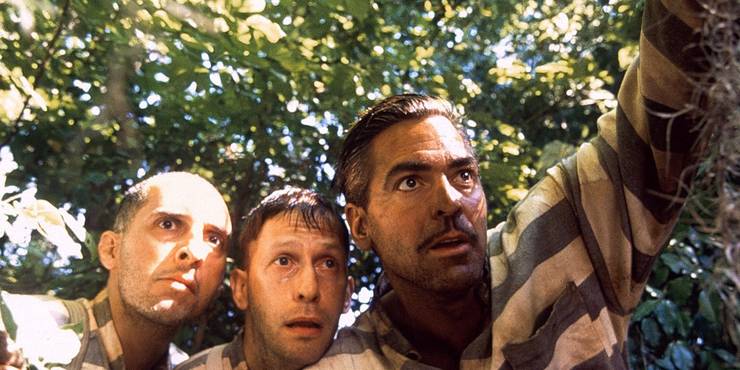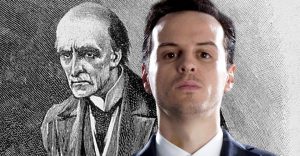10 Hidden Details You Missed In O Brother, Where Art Thou?

The Coen Brothers have one of the most diverse filmographies of any filmmakers and O Brother, Where Art Thou? is another crowning jewel in their brilliant body of work. The film stars George Clooney, John Turturro, and Tim Blake Nelson as a trio of escaped convicts searching for a hidden treasure across Depression Era Mississippi.
The film is a hilarious and unique adventure that borrows from many inspirations to create a perfect comedy only the Coen Brothers could conceive of. And like most of their films, O Brother Where Art Thou? is filled with hidden details.
10 Opening Quote

The film forgoes the typical narration you might usually find in a Coen Brothers movie but does start with a quote that reads, “O Muse! Sing in me, and through me tell the story of that man skilled in the ways of contending, a wanderer, harried for years on end …“
The quote is the opening line from Homer’s Odyssey, the story of a warrior’s long journey home. The Coen Brothers based this film on the storyline of that epic tale. Though, in typical Coen Brothers fashion, they admitted that neither of them has actually read the epic poem and just know it through pop culture.
9 The Title

While Homer’s Odyssey served as the basis for the overall story structure of the film, the title was taken from another source. The 1941 film Sullivan’s Travels follows a director who wants to make a movie that explores the suffering of real-life and attempts to live like the less-fortunate to gain experience. The name of the film he aspires to make is called “O Brother, Where Art Thou?”
The Coen Brothers’ film shares a few similarities with Sullivan’s Travels, including a similar scene in which convicts are brought into a theater to watch a film.
8 Chain Gang Chant

The film is filled with all kinds of brilliant music from different eras of America, which helps bring the film to life. The first song we hear over the opening credits is a chant from a chain gang as they work on the roads.
Remarkably, the chant heard is an actual recording of a chain gang singing the song, “Po Lazarus” in 1959. Even more remarkably, the Coen Brothers were able to track down one member of the chain gang and paid him $20,000 for use of the song in the film.
7 Characters From The Odyssey

Though the Coen Brothers might be having a little fun by saying the film is based on Homer’s Odyssey, they do include a number of references to the original story. Those who know the epic poem well will also likely see some characters they recognize.
Ulysses Everett McGill obviously stands in for Odysseus, the hero who attempts to return to his wife who is being pursued by a suitor. Other characters include Pappy O’Daniel who fills in for Zeus, the one-eyes Big Dan Teague who represents the cyclops, and the three singing girls who lure the heroes, representing the Sirens.
6 Singing Voices

O Brother Where Art Thou? has the rare distinction of having a soundtrack that has actually become more successful than the movie itself. And the most famous song from this soundtrack is “Man of Constant Sorrow”, which is sung in the film by the three lead characters.
Clooney was given the chance to sing the lead vocals on the song and took lessons to improve his singing voice. In the end, he admits he was not the man for the job and was dubbed. However, Tim Blake Nelson does actually provide vocals for his song, “In the Jailhouse Now”.
5 Baby Face Nelson

One of the colorful characters that the trio of heroes run into is George Nelson, a deranged bank robber who is depressed at not being taken seriously and having the nickname Baby Face Nelson.
Baby Face Nelson was indeed a bank robber from this era who is responsible for a number of daring crimes. However, Nelson was killed in 1935, two years before the events of this film. Also, he was killed in a shootout with police rather than executed while in custody, as is said in the film.
4 Cows

Though a fairly simple story, the film was praised for its use of visual effects and CGI. While not overly used in the film, the few cases are incorporated convincingly into the overall scene. In one instance, it might have been too convincing.
The scenes in which a cop car hits a cow looked so convincing that the American Humane Association demanded proof that no real animal was harmed. This also led to a new disclaimer being added to the film that read, “Scenes which may appear to place an animal in jeopardy were simulated.”
3 Tommy Johnson

Another memorable character that the trio of escaped convicts meets up with is Tommy Johnson, played by Chris Thomas King. When the heroes meet Tommy, he is standing at a crossroads where he says he met the devil and traded his soul for the ability to play the guitar.
Apparently, there is some truth to the character or at least some real-life inspiration. There was a famed blues musician named Tommy Johnson who sold his soul to the devil to play the blues, according to folk legend.
2 Klan Rally

One of the most memorable scenes in the film finds the three heroes sneaking into a Ku Klux Klan rally to save their new friend Tommy. The sequence is an elaborate one with a giant burning cross and hundreds of costumed extras.
The scene also features the Klan members performing an unusual ceremonial march of sorts. Ironically, the march is a military formation and the military troupe hired to dress as Klan members and perform the scene were largely African-American.
1 The Cabin

At the end of the film, the three companions finally reach Everett’s cabin, which is tucked away in the woods. Some horror fans might have recognized the cabin from an iconic film of the genre.
The Coens modeled the cabin on the one featured prominently in Sam Raimi’s The Evil Dead. This is not just a random inclusion, but rather an in-joke with their friend Raimi since Joel Coen worked on The Evil Dead with him.
About The Author


















